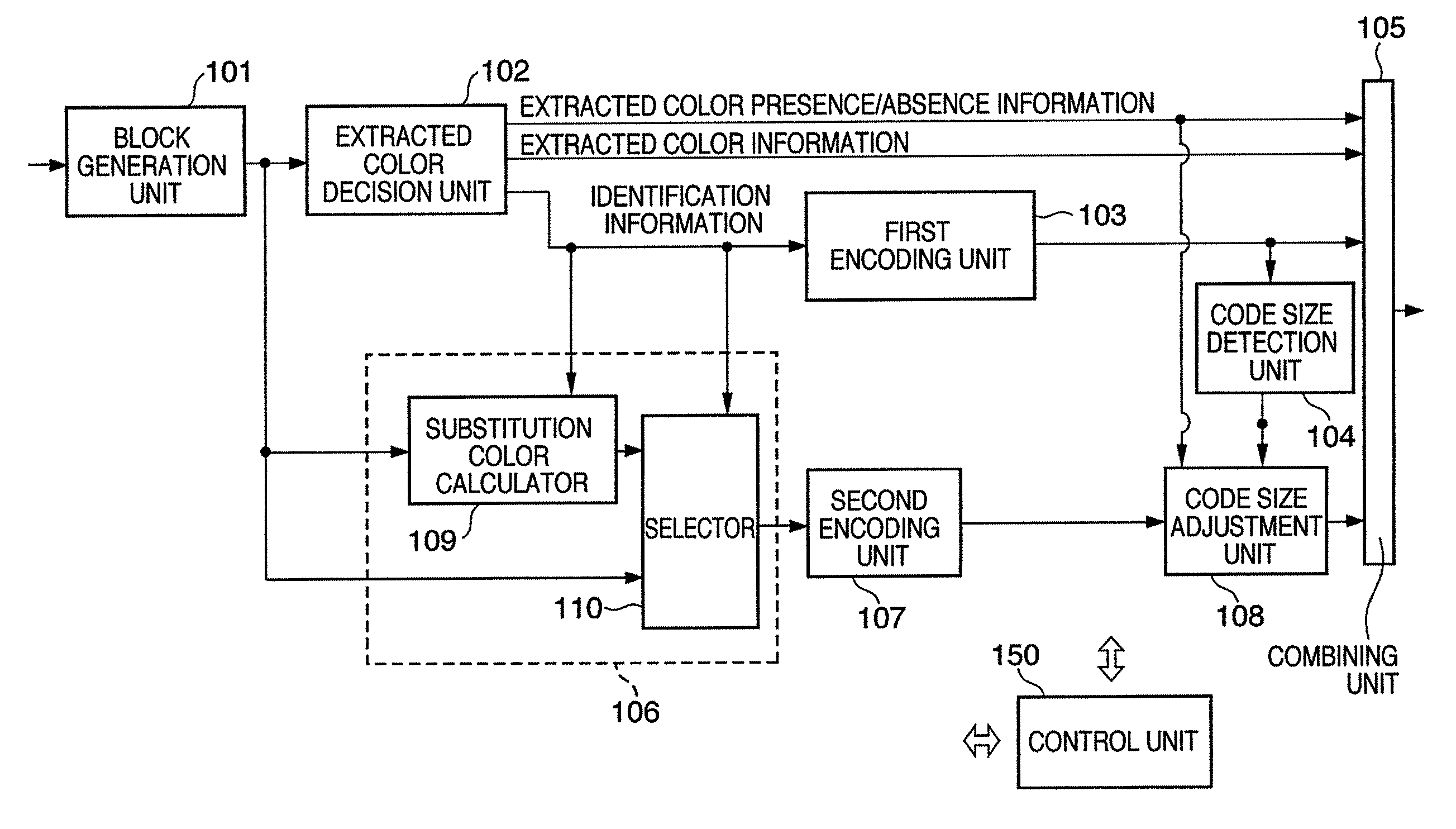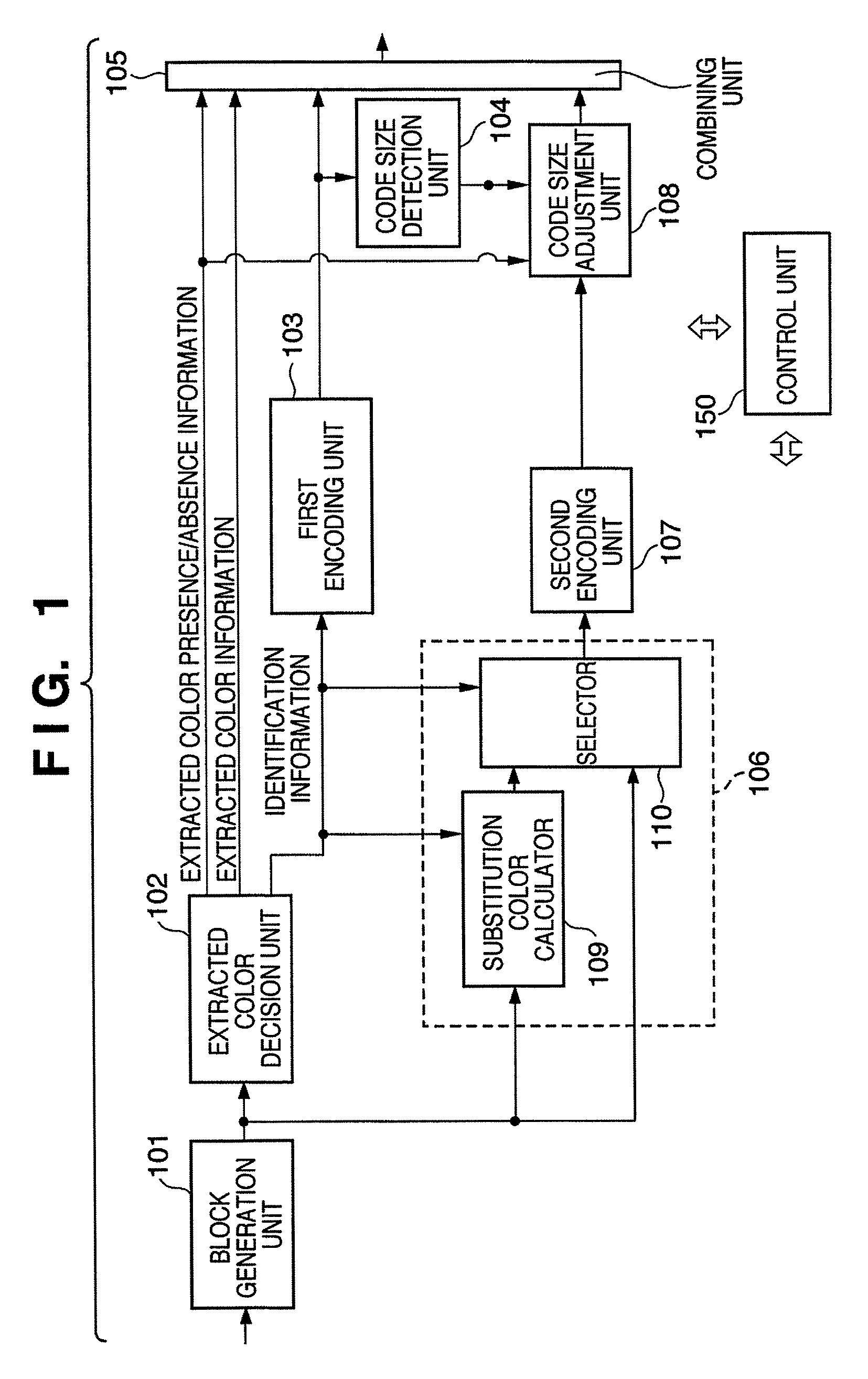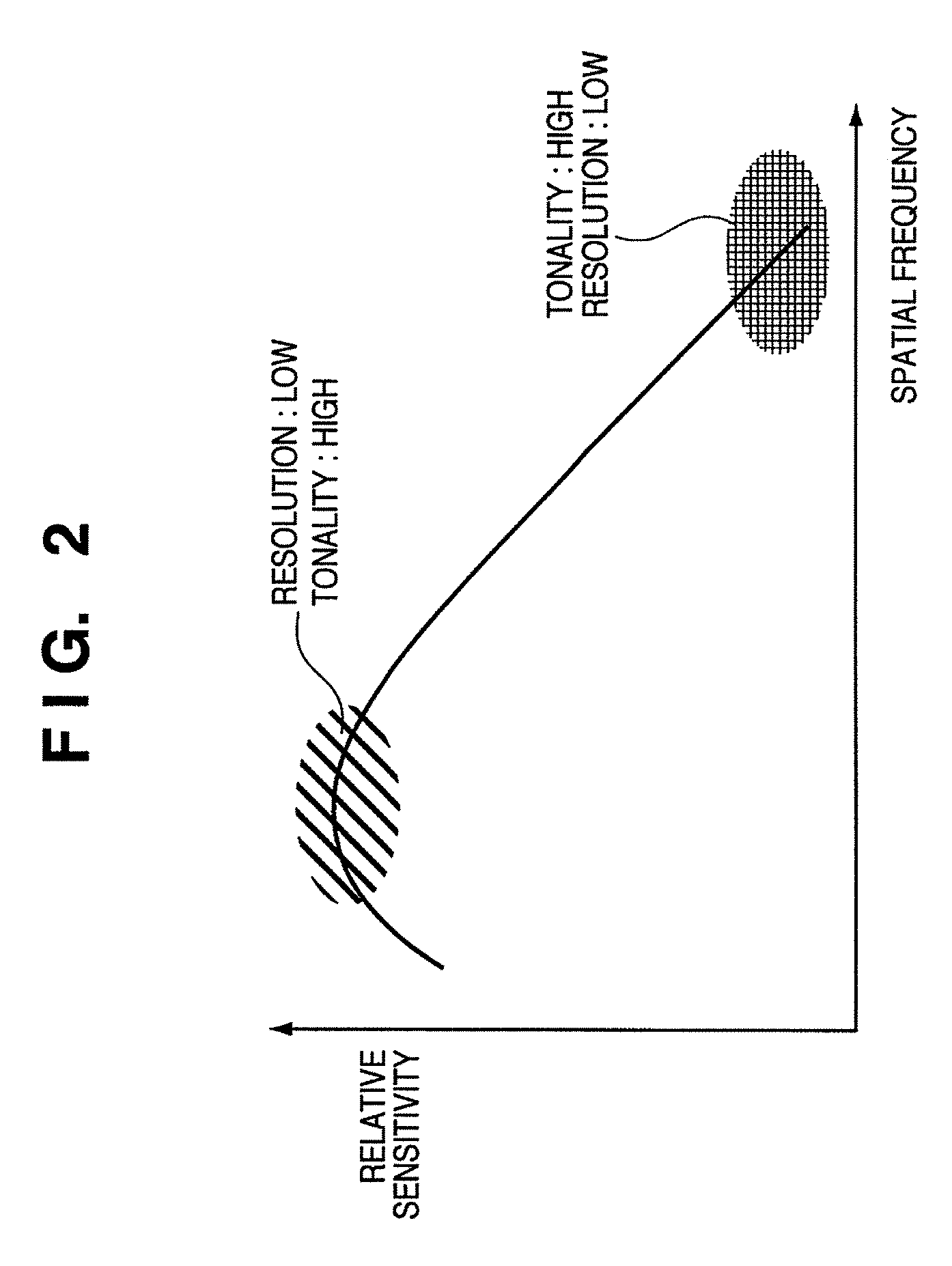Image encoding apparatus and decoding apparatus, and control method thereof
a technology of encoding apparatus and decoding apparatus, applied in the field of image encoding and decoding techniques, can solve the problems of complicated manipulation of data to fall within a predetermined code size, difficult to achieve random access and rotation processing of respective blocks,
- Summary
- Abstract
- Description
- Claims
- Application Information
AI Technical Summary
Benefits of technology
Problems solved by technology
Method used
Image
Examples
first embodiment
Modification of First Embodiment
[0082]An example of implementing the first embodiment by a computer program will be described below as a modification of the first embodiment.
[0083]FIG. 5 is a block diagram showing the arrangement of an information processing apparatus (e.g., a personal computer) according to this modification.
[0084]In FIG. 5, reference numeral 1401 denotes a CPU, which controls the overall apparatus using programs and data stored in a RAM 1402 and ROM 1403, and executes application programs of image encoding processing and decoding processing to be described later. Reference numeral 1402 denotes a RAM which comprises an area for storing programs and data which are read out from an external storage device 1407 or storage medium drive 1408, or are downloaded from an external apparatus via an I / F 1409. The RAM 1402 also comprises a work area used when the CPU 1401 executes various kinds of processing. Reference numeral 1403 denotes a ROM which stores a boot program, an...
second embodiment
[0120]FIG. 8 is a block diagram showing the arrangement of an encoding apparatus according to the second embodiment. The differences between FIGS. 8 and 1 are that a resolution converting unit 120 is inserted between a substitution unit 106 and second encoding unit 107, and a block generation unit 101 extracts image data of 16×16 pixels from image data to be encoded. Since other components are the same as those in FIG. 1, they are denoted by the same reference numerals, and a detailed description thereof will not be repeated.
[0121]Note that since one block size is 16×16 pixels, an extracted color decision unit 102 generates identification information of 256 bits (=16×16).
[0122]The resolution converting unit 120 converts halftone image data of 16×16 pixels outputted from a selector 110 to have ½ resolutions in both the horizontal and vertical directions, thereby generating image data of 8×8 pixels. The resolution conversion itself can use a state-of-the-art technique. For example, in...
PUM
 Login to View More
Login to View More Abstract
Description
Claims
Application Information
 Login to View More
Login to View More - R&D
- Intellectual Property
- Life Sciences
- Materials
- Tech Scout
- Unparalleled Data Quality
- Higher Quality Content
- 60% Fewer Hallucinations
Browse by: Latest US Patents, China's latest patents, Technical Efficacy Thesaurus, Application Domain, Technology Topic, Popular Technical Reports.
© 2025 PatSnap. All rights reserved.Legal|Privacy policy|Modern Slavery Act Transparency Statement|Sitemap|About US| Contact US: help@patsnap.com



